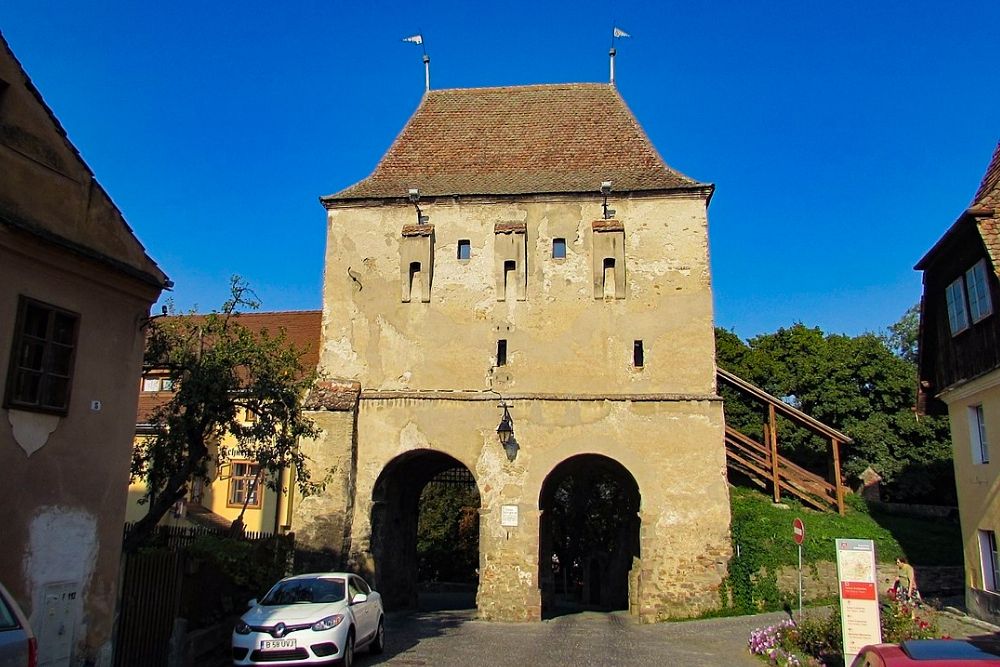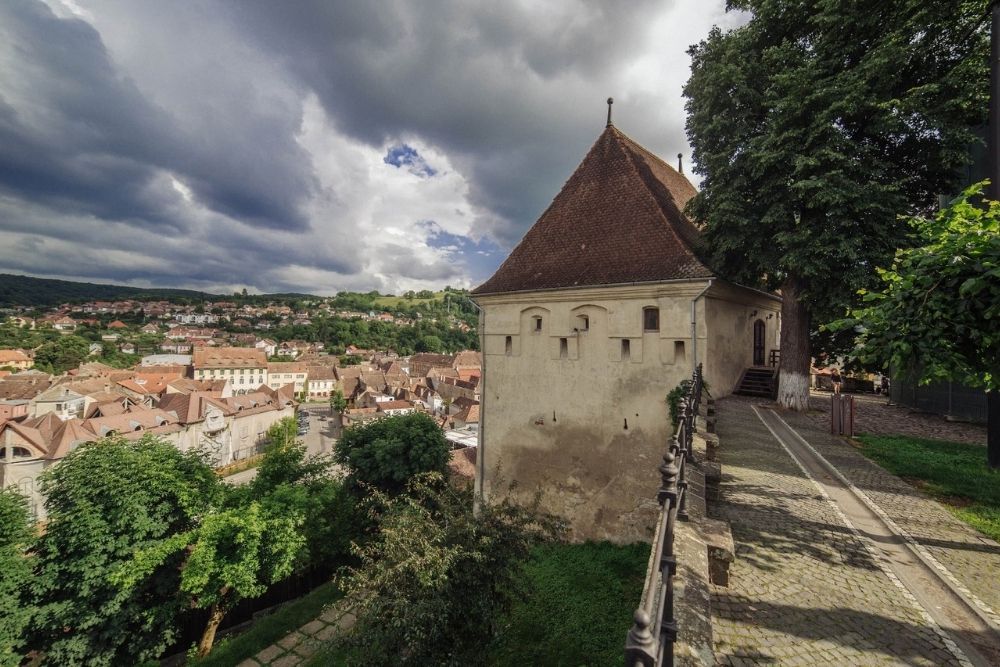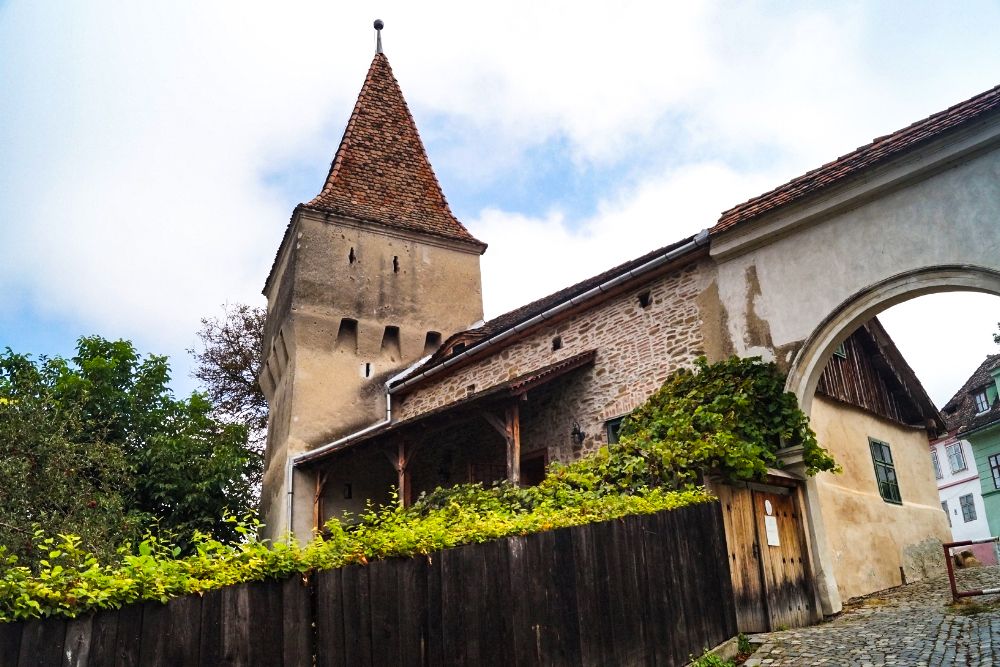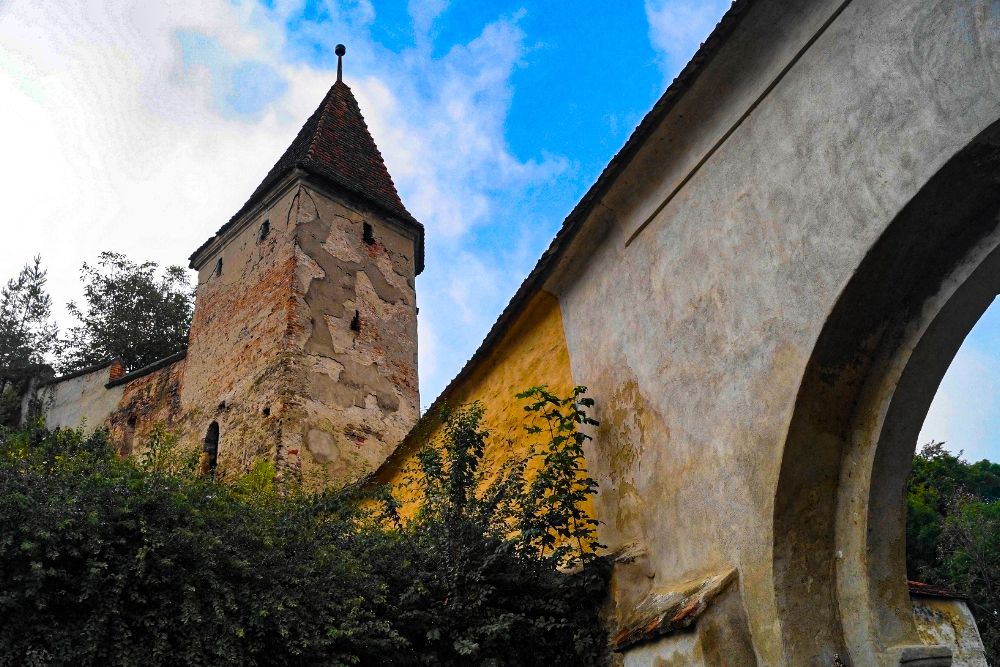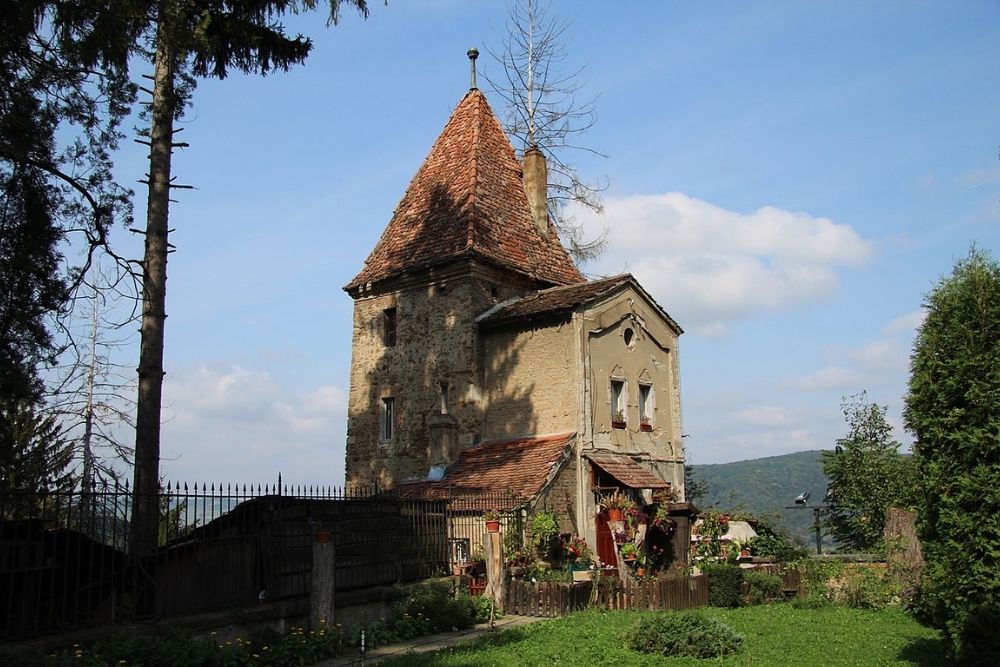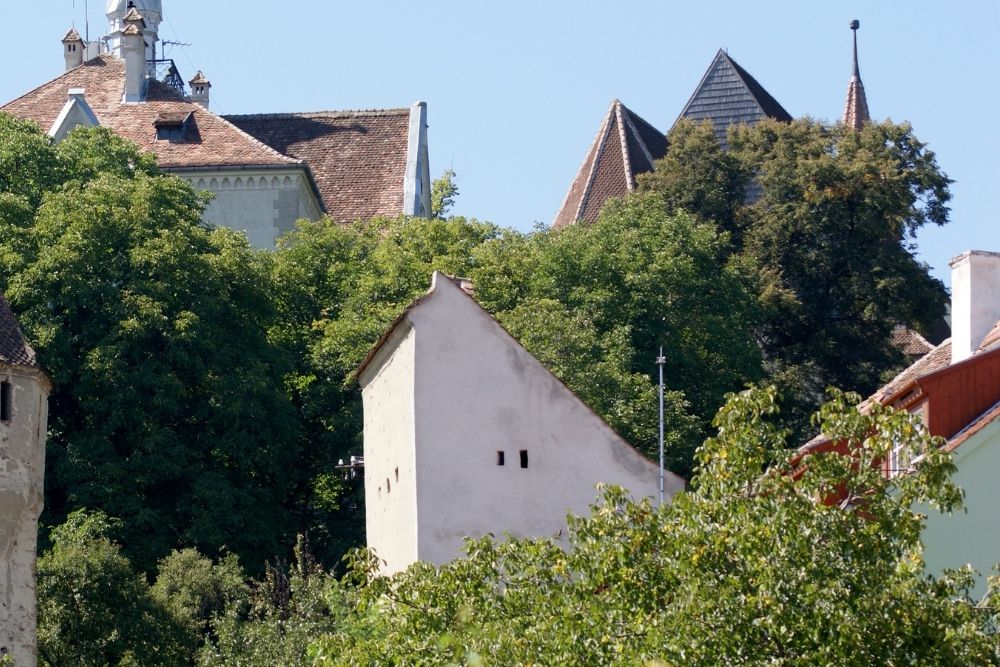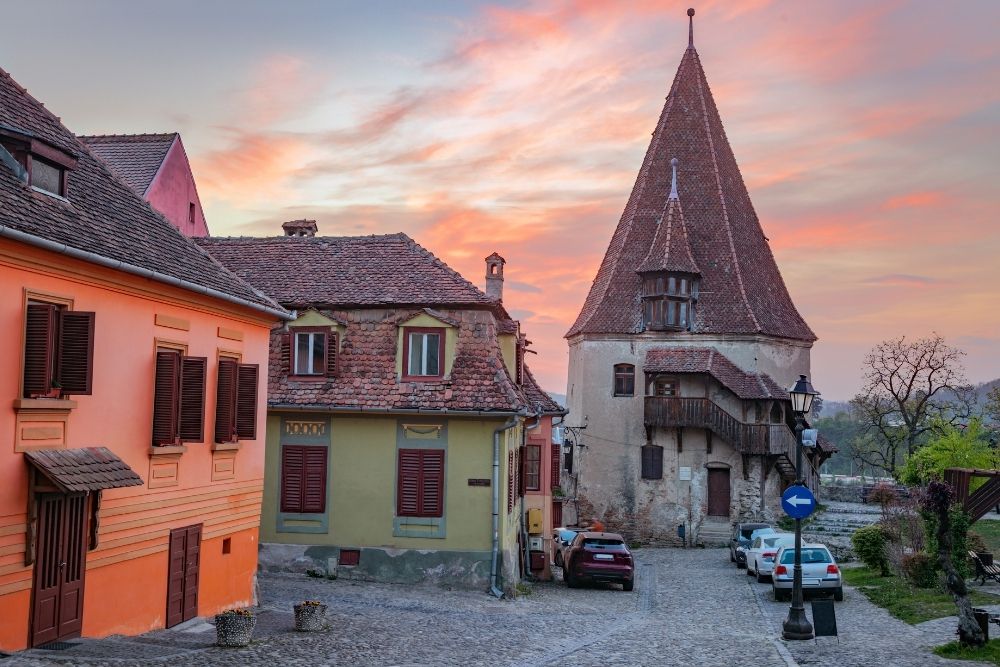Sighisoara is Romania’s best-preserved medieval town, a genuine Transylvanian tourist pearl, transformed in recent decades into a major attraction for Romanian and foreign tourists on holiday or traveling in the center of the country.
The city located in Mures county has a population of about 30,000 inhabitants and magnetizes its visitors with its historical center, included in the UNESCO World Heritage Site. Sighisoara was founded by German settlers (craftsmen and merchants) who arrived in Transylvania at the initiative of the Hungarian king Géza II. These were later known as the “Transylvanian Saxons.” The first documentary mention of the village comes from 1280, under the name Castrum Sex, which speaks about a settlement founded on the ruins of a former Roman castrum.
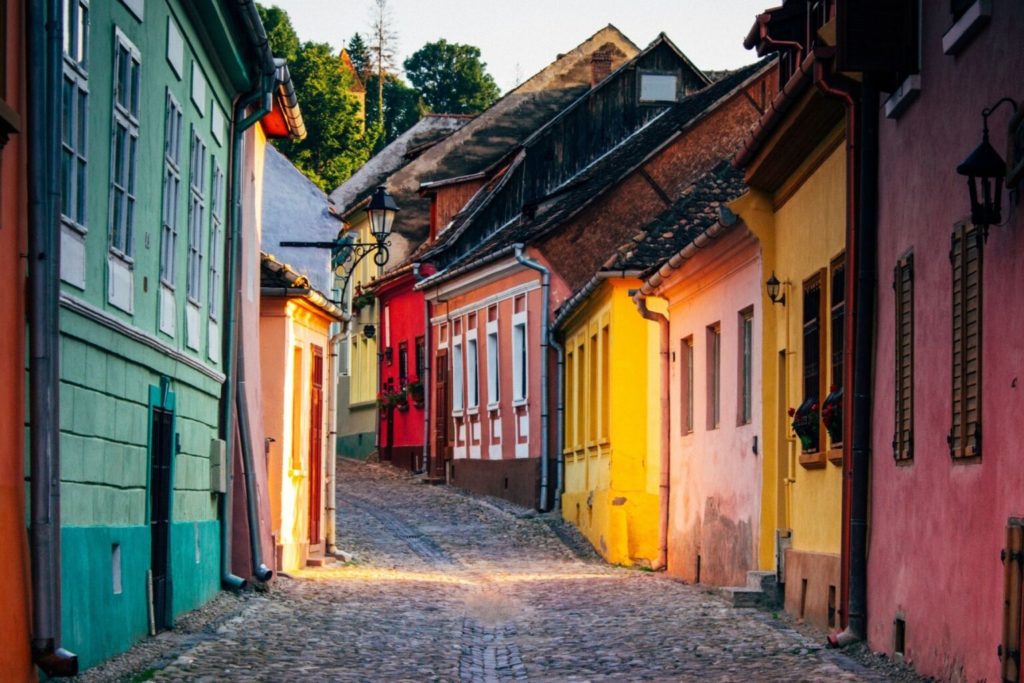
First fortified in 1350, Sighisoara has had a tumultuous history, including the birth of Vlad the Impaler (in 1431) and numerous attacks by various nations and groups, by plague epidemics or fires. More or less, all these interesting histories are found today in buildings and monuments in the old center of the village. For first-time travelers, here are 10 places to visit in Sighisoara, a mini-guide regarding what to do and what to see in the medieval jewel of Romania.
10 places to see in Sighisoara, Romania
In the late Middle Ages, the Sighisoara Fortress was marking the border with the Ottoman Empire, where the town had to face numerous and repeated attacks and raids. Therefore, between 1300 and 1500, it was the task of the city guilds to build and manage several defense towers.
The fortress walls were erected in the 14th century, having a 14 meters thickness, but it had to be fortified, from place to place, with defensive towers.
Tailors Tower / Photo by Cezar Suceveanu (Wikimedia) Tinnermen Tower / Photo by haidamac Smiths’ Tower / Photo by sighisoaraonline.com Furriers Tower / Photo by Ramona Georgescu Butchers Tower / Photo by Ramona Georgescu Ropers Tower / Photo by GerritR (Wikipedia) Tanners Tower / Photo by prill Shoemakers Tower / Photo by benkrut
The town’s craftsmen built 14 such towers (14 seem to be a magic figure in Sighisoara), 9 of which “survived” to our days, good or excellent preserved. The destroyed towers were the Weavers’ Tower (fallen in 1858), the Fishermen’s Tower (located on the bank of Târnava river), the Goldsmiths’ Tower (set on fire in 1809, on its place, there is a chapel in a cemetery, it was one of the strongest towers, belonging to the richest guild), the Locksmiths’ Tower (a small tower) and the Coopers’ Tower (demolished in 1886) – the last two located between those of the Shoemakers and Blacksmiths, while the remaining towers are as follows:
- The Tower with Clock, which is the most important (describes above)
- The Rope Tower – is located on the Hill School plateau. It served as home to the guardian of the Evangelical Cemetery and his family. It was restored in the 19th century.
- The Butchers Tower – finished in the late 15th century, had the form of a prism with eight sides, being restored a century later with a hexagonal base and three floors.
- The Furriers Tower – was destroyed in the great fire of 1676, but it was later rebuilt, having four floors. It’s the tower that defended the Törle Gate.
- The Smiths’ Tower – built in 1631, is located in the northeast and has a rectangular plan, being the work of the former mayor Eisenburger. It was also destroyed in the fire, later rebuilt.
- The Tinnermen Tower – defend the city on the same Tower with Clock line. It’s four stories tall, 25 meters high, and it has bizarre architecture, which starts with a quadrilateral, so it becomes pentagonal in the middle, then octagonal. On its walls, we still see traces of the cannonballs from the Kurutds’ siege from the beginning of the 18th century.
- The Tailors’ Tower is one of the most beautiful and majestic towers of the Citadel, being erected in the 14th century opposite the Tower with Clock. It is based on two canopy gangs, above which rises two levels. It was rebuilt after the fire in 1676 under the orders of Mayor Michael Helwig.
- The Shoemakers Tower – a hexagonal tower located in the northeast, equipped with two smaller observation towers. It was first mentioned in 1521, then destroyed during a siege and rebuilt in 1650, destroyed once again by the great fire, and built again in 1681, in Baroque style.
- The Tanners Tower – An old and simple tower on a square plan to defend the fortress court.


















